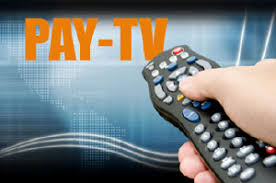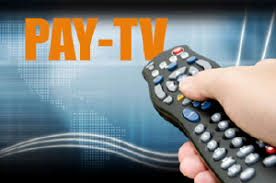
Attempts at preventing the desertion of customers lured away by cheaper entertainment options such as Netflix and Snapchat by companies ranging from AT&T Inc. to Viacom Inc. have failed and this has led the investors in traditional TV providers reeling.
Echoing a similar warning, weeks earlier from Comcast Corp, AT&T said late last week that it will report a third-quarter loss of 390,000 satellite and cable customers. AT&T is the biggest U.S. pay-television provider’s due to its ownership of the DirecTV satellite service.
Potentially testing whether millions of viewers are willing to go without MTV and Nickelodeon Viacom cautioned the same night that its distribution deal with Charter Communications Inc., the second-biggest cable U.S. company, may lead to a blackout.
There has also been a broader selloff in the sector as the share price of both the companies fell following those announcements. There was a slide of 2.3 percent in the S&P 500 Media Index, which reached its lowest level since December. The index includes Comcast and ESPN owner Walt Disney Co.
The pay-TV ecosystem is in full-blown crisis mode after decades of steadily increasing bills and ever-bigger packages of channels. Companies like AT&T, Dish Network Inc. and others have been forced to accept thinner profit margins as these companies are now offering cheaper, online-only versions of cable to lure customers back.
“Those salad days of fat bundles, automatic carriage renewals and customary affiliate steps ups are long gone,” Citigroup Inc. analyst Jason Bazinet wrote in a note this week. “Today, every media and cable firm is jockeying for self-preservation. And we suspect the next chapter in this new era means Charter will drop -- or significantly curtail -- distribution of Viacom’s content.”
According to Bloomberg Intelligence, surpassing last year’s 1.7 million, 2017 is on course to be the worst year for conventional pay-TV subscriber losses in history, barring a major fourth-quarter comeback. Online services like DirecTV Now are not included in that figure. In the third quarter, the five biggest TV providers are projected to have lost 469,000 customers even including those digital plans.
The biggest one-day loss since November 2008 was seen by AT&T which sank 6.1 percent. There has also been a decline of 5.1 per cent in Dish, which also provides satellite service. After Guggenheim Securities LLC downgraded the two stocks to neutral from buy, Viacom dropped 2.5 percent while AMC Networks Inc. fell 6.8 percent.
By acquiring HBO and CNN owner Time Warner Inc. in an $85.4 billion deal, Dallas-based AT&T is pushing headlong into TV programming. The acquisition will let AT&T provide valuable targeting information for advertisers and help create compelling video packages for mobile subscribers, Chief Executive Officer Randall Stephenson has argued.
But Stephenson is also under pressure to prove he can keep people paying for TV in the first place with video subscriptions falling.
“It is becoming increasingly clear that the wheels are falling off of satellite TV,” said Craig Moffett, an analyst at MoffettNathanson LLC, in a research note.
(Sourcec:www.bloomberg.com)
Echoing a similar warning, weeks earlier from Comcast Corp, AT&T said late last week that it will report a third-quarter loss of 390,000 satellite and cable customers. AT&T is the biggest U.S. pay-television provider’s due to its ownership of the DirecTV satellite service.
Potentially testing whether millions of viewers are willing to go without MTV and Nickelodeon Viacom cautioned the same night that its distribution deal with Charter Communications Inc., the second-biggest cable U.S. company, may lead to a blackout.
There has also been a broader selloff in the sector as the share price of both the companies fell following those announcements. There was a slide of 2.3 percent in the S&P 500 Media Index, which reached its lowest level since December. The index includes Comcast and ESPN owner Walt Disney Co.
The pay-TV ecosystem is in full-blown crisis mode after decades of steadily increasing bills and ever-bigger packages of channels. Companies like AT&T, Dish Network Inc. and others have been forced to accept thinner profit margins as these companies are now offering cheaper, online-only versions of cable to lure customers back.
“Those salad days of fat bundles, automatic carriage renewals and customary affiliate steps ups are long gone,” Citigroup Inc. analyst Jason Bazinet wrote in a note this week. “Today, every media and cable firm is jockeying for self-preservation. And we suspect the next chapter in this new era means Charter will drop -- or significantly curtail -- distribution of Viacom’s content.”
According to Bloomberg Intelligence, surpassing last year’s 1.7 million, 2017 is on course to be the worst year for conventional pay-TV subscriber losses in history, barring a major fourth-quarter comeback. Online services like DirecTV Now are not included in that figure. In the third quarter, the five biggest TV providers are projected to have lost 469,000 customers even including those digital plans.
The biggest one-day loss since November 2008 was seen by AT&T which sank 6.1 percent. There has also been a decline of 5.1 per cent in Dish, which also provides satellite service. After Guggenheim Securities LLC downgraded the two stocks to neutral from buy, Viacom dropped 2.5 percent while AMC Networks Inc. fell 6.8 percent.
By acquiring HBO and CNN owner Time Warner Inc. in an $85.4 billion deal, Dallas-based AT&T is pushing headlong into TV programming. The acquisition will let AT&T provide valuable targeting information for advertisers and help create compelling video packages for mobile subscribers, Chief Executive Officer Randall Stephenson has argued.
But Stephenson is also under pressure to prove he can keep people paying for TV in the first place with video subscriptions falling.
“It is becoming increasingly clear that the wheels are falling off of satellite TV,” said Craig Moffett, an analyst at MoffettNathanson LLC, in a research note.
(Sourcec:www.bloomberg.com)





